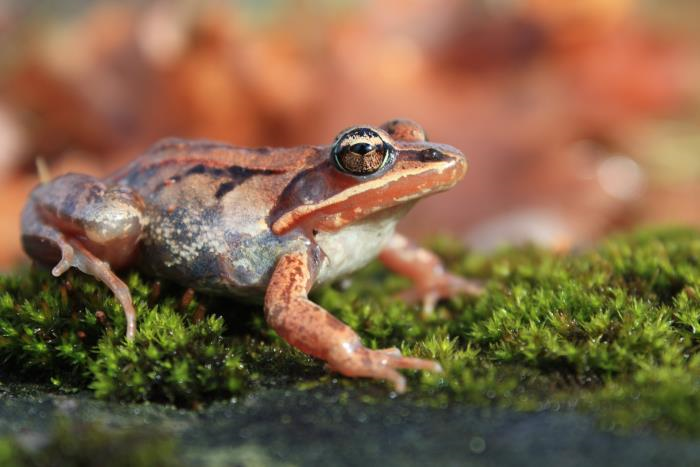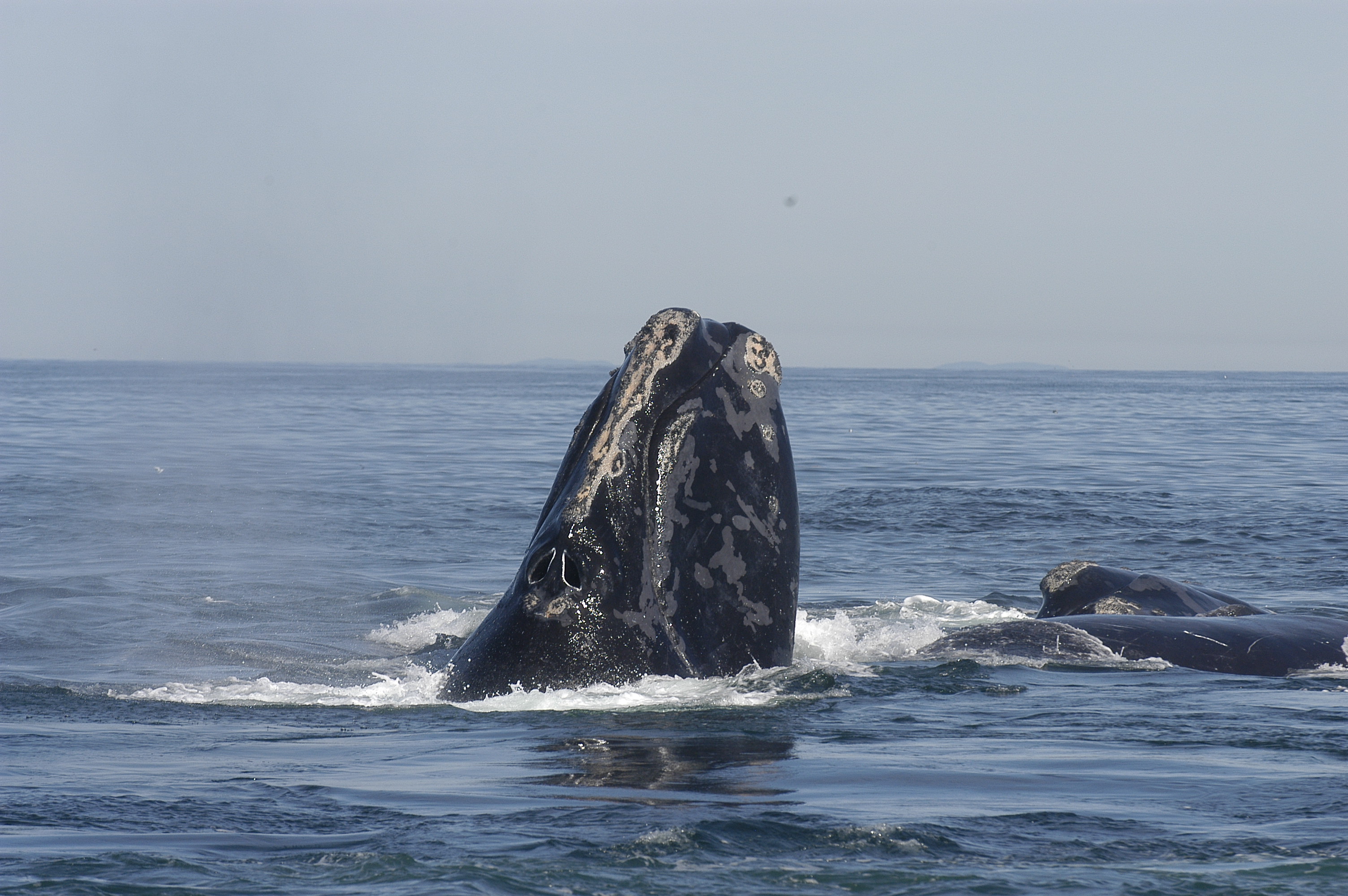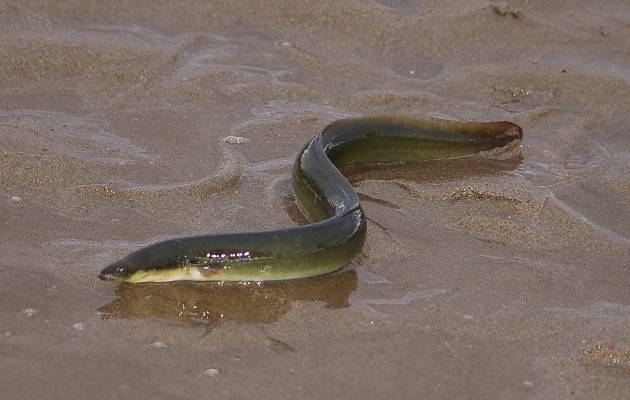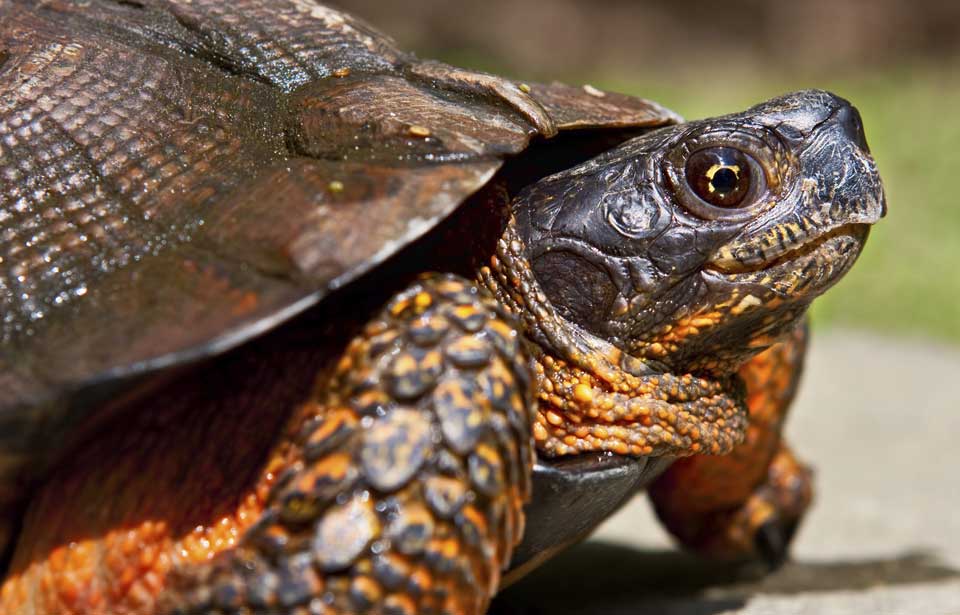Narwhals (Monodon monoceros) are considered medium-sized odontocetes, or toothed whales (the largest being the sperm whale, and the smallest, the harbour porpoise), being of a similar size to the beluga, its close relative. Males can grow up to 6.2 m -the average size being 4.7 m- and weigh about 1,600 kg. Females tend to be smaller, with an average size of 4 m and a maximum size of 5.1 m and weigh around 900 kg. A newborn calf is about 1.6 m long and weighs about 80 kilograms. The narwhal has a deep layer of fat, or blubber, about 10 cm thick, which forms about one-third of the animal’s weight and acts as insulation in the cold Arctic waters.
Like belugas, they have a small head, a stocky body and short, round flippers. Narwhals lack a dorsal fin on their backs, but they do have a dorsal ridge about 5 cm high that covers about half their backs. This ridge can be used by researchers to differentiate one narwhal from another. It is thought that the absence of dorsal fin actually helps the narwhal navigate among sea ice. Unlike other cetaceans –the order which comprises all whales–, narwhals have convex tail flukes, or tail fins.
These whales have a mottled black and white, grey or brownish back, but the rest of the body (mainly its underside) is white. Newborn narwhal calves are pale grey to light brownish, developing the adult darker colouring at about 4 years old. As they grow older, they will progressively become paler again. The narwhal’s colouring gives researchers an idea about how old an individual is. Some may live up to 100 years, but most probably live to be 60 years of age.

The narwhal’s most striking feature is undoubtedly its tusk. This long, spiral upper incisor tooth (one of the two teeth narwhals have) grows out from the animal’s upper jaw, and can measure up to 3 m and weigh up to 10 kg. Although the second, smaller incisor tooth often remains embedded in the skull, it rarely but on occasion develops into a second tusk. Tusks typically grow only on males, but a few females have also been observed with short tusks. The function of the tusk remains a mystery, but several hypotheses have been proposed. Many experts believe that it is a secondary sexual character, similar to deer antlers. Thus, the length of the tusk may indicate social rank through dominance hierarchies and assist in competition for access to females. Indeed, there are indications that the tusks are used by male narwhals for fighting each other or perhaps other species, like the beluga or killer whale. A high quantity of tubules and nerve endings in the pulp –the soft tissue inside teeth – of the tusk have at least one scientist thinking that it could be a highly sensitive sensory organ, able to detect subtle changes in temperature, salinity or pressure. Narwhals have not been observed using their tusk to break sea ice, despite popular belief. Narwhals do occasionally break the tip of their tusk though which can never be repaired. This is more often seen in old animals and gives more evidence that the tusk might be used for sexual competition. The tusk grows all throughout a male’s lifespan but slows down with age.

































 The Atlantic Cod (Gadus morhua) is a medium to large saltwater fish: generally averaging two to three kilograms in weight and about 65 to 100 centimetres in length, the largest cod on record weighed about 100 kg and was more than 180 cm long! Individuals living closer to shore tend to be smaller than their offshore relatives, but male and female cod are not different in size, wherever they live.
The Atlantic Cod (Gadus morhua) is a medium to large saltwater fish: generally averaging two to three kilograms in weight and about 65 to 100 centimetres in length, the largest cod on record weighed about 100 kg and was more than 180 cm long! Individuals living closer to shore tend to be smaller than their offshore relatives, but male and female cod are not different in size, wherever they live.
 The North Atlantic Right Whale (Eubalæna glacialis) is one of the rarest of the large whales. It can weigh up to 63,500 kilograms and measure up to 16 metres. That’s the length of a transport truck and twice the weight! Females tend to be a bit larger than males – measuring, on average, one metre longer. Considering its weight, it’s fairly short, giving it a stocky, rotund appearance. Its head makes up about a fourth of its body length, and its mouth is characterized by its arched, or highly curved, jaw. The Right Whale’s head is partially covered in what is called callosities (black or grey raised patches of roughened skin) on its upper and lower jaws, and around its eyes and blowhole. These callosities can appear white or cream as small cyamid crustaceans, called “whale lice”, attach themselves to them. Its skin is otherwise smooth and black, but some individuals have white patches on their bellies and chin. Under the whale’s skin, a blubber layer of sometimes more than 30 centimetres thick helps it to stay warm in the cold water and store energy. It has large, triangular flippers, or pectoral fins. Its tail, also called flukes or caudal fins, is broad (six m wide from tip to tip!), smooth and black. That’s almost the same size as the Blue Whale’s tail, even though Right Whales are just over half their size. Unlike most other large whales, it has no dorsal fin.
The North Atlantic Right Whale (Eubalæna glacialis) is one of the rarest of the large whales. It can weigh up to 63,500 kilograms and measure up to 16 metres. That’s the length of a transport truck and twice the weight! Females tend to be a bit larger than males – measuring, on average, one metre longer. Considering its weight, it’s fairly short, giving it a stocky, rotund appearance. Its head makes up about a fourth of its body length, and its mouth is characterized by its arched, or highly curved, jaw. The Right Whale’s head is partially covered in what is called callosities (black or grey raised patches of roughened skin) on its upper and lower jaws, and around its eyes and blowhole. These callosities can appear white or cream as small cyamid crustaceans, called “whale lice”, attach themselves to them. Its skin is otherwise smooth and black, but some individuals have white patches on their bellies and chin. Under the whale’s skin, a blubber layer of sometimes more than 30 centimetres thick helps it to stay warm in the cold water and store energy. It has large, triangular flippers, or pectoral fins. Its tail, also called flukes or caudal fins, is broad (six m wide from tip to tip!), smooth and black. That’s almost the same size as the Blue Whale’s tail, even though Right Whales are just over half their size. Unlike most other large whales, it has no dorsal fin.
















 Adult Trumpeter Swans Cygnus buccinator are large birds with white feathers and black legs and feet. The feathers of the head and the upper part of the neck often become stained orange as a result of feeding in areas rich in iron salts. The lack of colour anywhere on the swans’ bodies distinguishes them from other white species of waterfowl, such as snow geese, which have black wing tips.
Adult Trumpeter Swans Cygnus buccinator are large birds with white feathers and black legs and feet. The feathers of the head and the upper part of the neck often become stained orange as a result of feeding in areas rich in iron salts. The lack of colour anywhere on the swans’ bodies distinguishes them from other white species of waterfowl, such as snow geese, which have black wing tips.